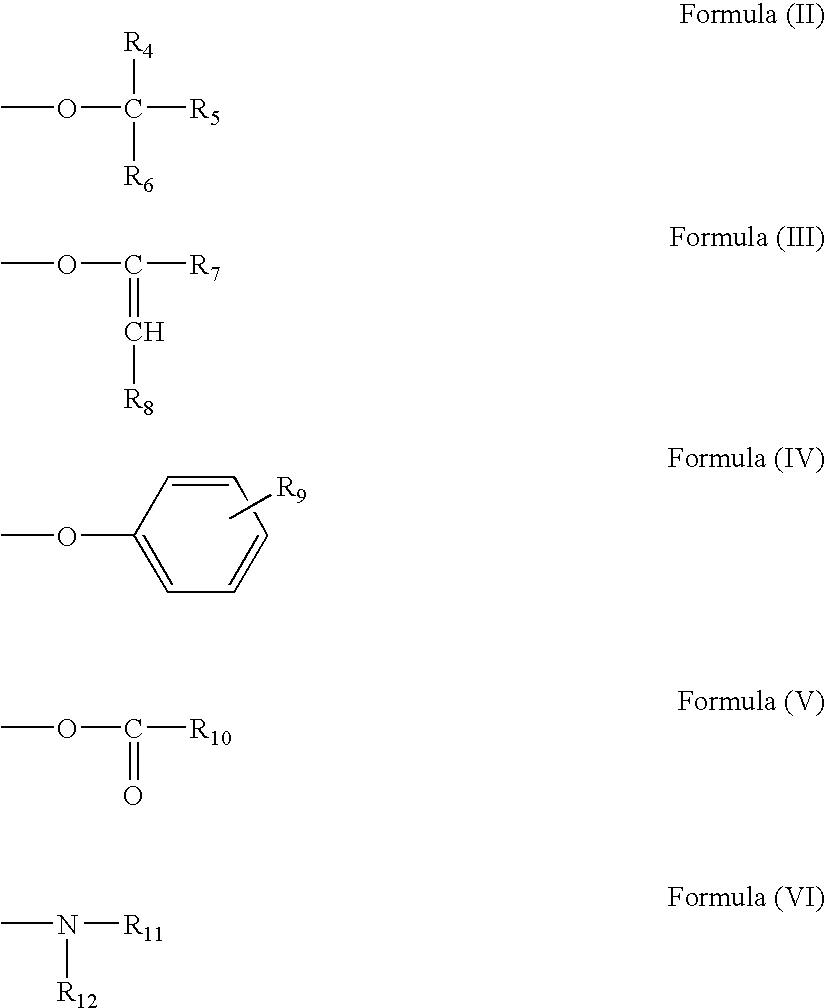Polyester production method, polyester composition, and polyester fiber
a production method and polyester fiber technology, applied in the field of polyester fiber production method, polyester fiber, polyester composition, etc., can solve the problems of reducing the color of polymer, affecting the quality of polymer, etc., to achieve excellent fiber and film formation properties, improve the effect of filter pressure and excellent color tone of polymer
- Summary
- Abstract
- Description
- Claims
- Application Information
AI Technical Summary
Benefits of technology
Problems solved by technology
Method used
Image
Examples
example 1
(Preparing Catalyst Compound)
[0175](Preparing Titanium Catalyst Solution)
[0176]Warm (50° C.) water (371 g) was put into a 3 liter flask having a stirrer, condenser, and thermometer, into which a citric acid monohydrate (532 g, 2.52 mol) was dissolved. While stirring the solution, titanium tetraisopropoxide (288 g, 1.00 mol) was slowly added thereto from a dropping funnel. This compound was refluxed for 1 hour under heat, so as to generate a cloudy solution, and the isopropanol / water thereof was distilled and removed under a vacuum. The remainder was cooled to under 70° C., and the solution thereof was stirred while slowly adding 32 weight / weight % aqueous solution of NaOH (380 g, 3.04 mol) from a dropping funnel. The generated product was filtered, then mixed with ethylene glycol (504 g, 8 mol), and heated under vacuum to remove the isopropanol / water, thereby obtaining a slightly cloudy, light-yellow product containing a chelated titanium citrate (containing 3.85% by weight of titan...
example 2
(Preparing Catalyst Compound)
[0187](Preparing Titanium Catalyst Solution)
[0188]Carried out in the same way as with Example 1.
[0189](Adding Phosphorous Compound)
[0190]To the titanium catalyst solution was added phenylphosphonic acid (158 g, 1.00 mol), thereby yielding a titanium catalyst composition having a phosphorous compound (containing 2.49% by mass of P).
(Producing Polyester Composition)
[0191]A polyester composition was obtained in the same way as with Example 1 except for using the above catalyst composition and adding the phosphorous compound 1 so as to be 1 ppm by mass to the target production amount of polyester in terms of phosphorous atoms.
(Melt Spinning, Drawing)
[0192]Carried out in the same way as with Example 1, except for using the above-described polyester composition.
example 3
(Preparing Catalyst Compound)
[0193](Preparing Titanium Catalyst Solution)
[0194]Carried out in the same way as with Example 1.
[0195](Adding Phosphorous Compound)
[0196]To the titanium catalyst solution was added 85 weight / weight % of an aqueous solution of phosphoric acid (39.9 g, 0.35 mol) and phenylphosphonic acid (158 g, 1.00 mol), thereby yielding a titanium catalyst composition having a phosphorous compound (containing 2.49% by mass of P).
(Producing Polyester Composition)
[0197]A polyester composition was obtained in the same way as with Example 1 except for using the above catalyst composition and adding the phosphorous compound 1 so as to be 300 ppm by mass to the target production amount of polyester in terms of phosphorous atoms.
(Melt Spinning, Drawing)
[0198]Carried out in the same way as with Example 1, except for using the above-described polyester composition.
[0199]
TABLE 1Example 1Example 2Example 3Titanium compoundchelated titanium citratechelated titanium citratechelated ...
PUM
| Property | Measurement | Unit |
|---|---|---|
| elongation | aaaaa | aaaaa |
| elongation | aaaaa | aaaaa |
| mol % | aaaaa | aaaaa |
Abstract
Description
Claims
Application Information
 Login to View More
Login to View More - R&D
- Intellectual Property
- Life Sciences
- Materials
- Tech Scout
- Unparalleled Data Quality
- Higher Quality Content
- 60% Fewer Hallucinations
Browse by: Latest US Patents, China's latest patents, Technical Efficacy Thesaurus, Application Domain, Technology Topic, Popular Technical Reports.
© 2025 PatSnap. All rights reserved.Legal|Privacy policy|Modern Slavery Act Transparency Statement|Sitemap|About US| Contact US: help@patsnap.com



